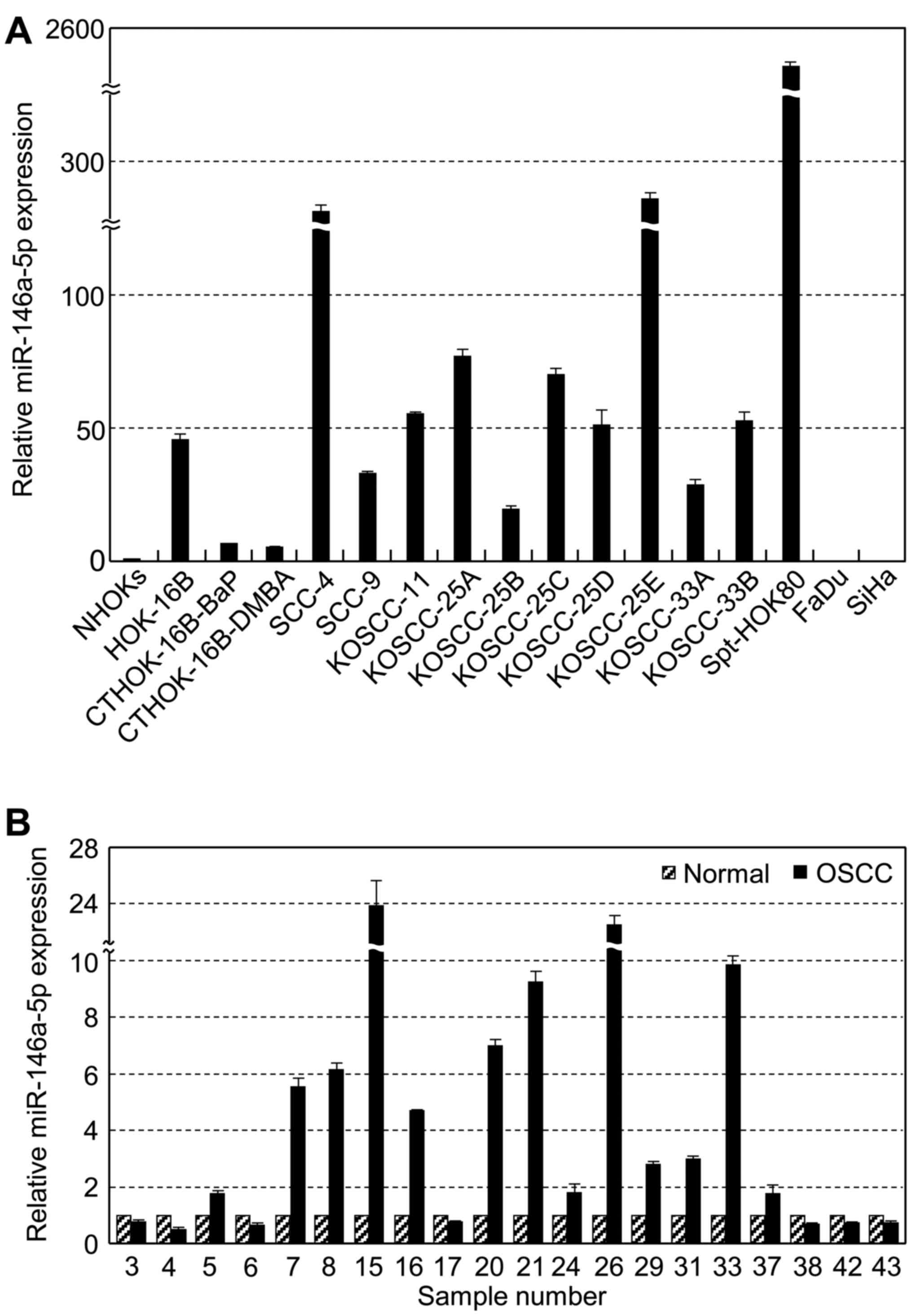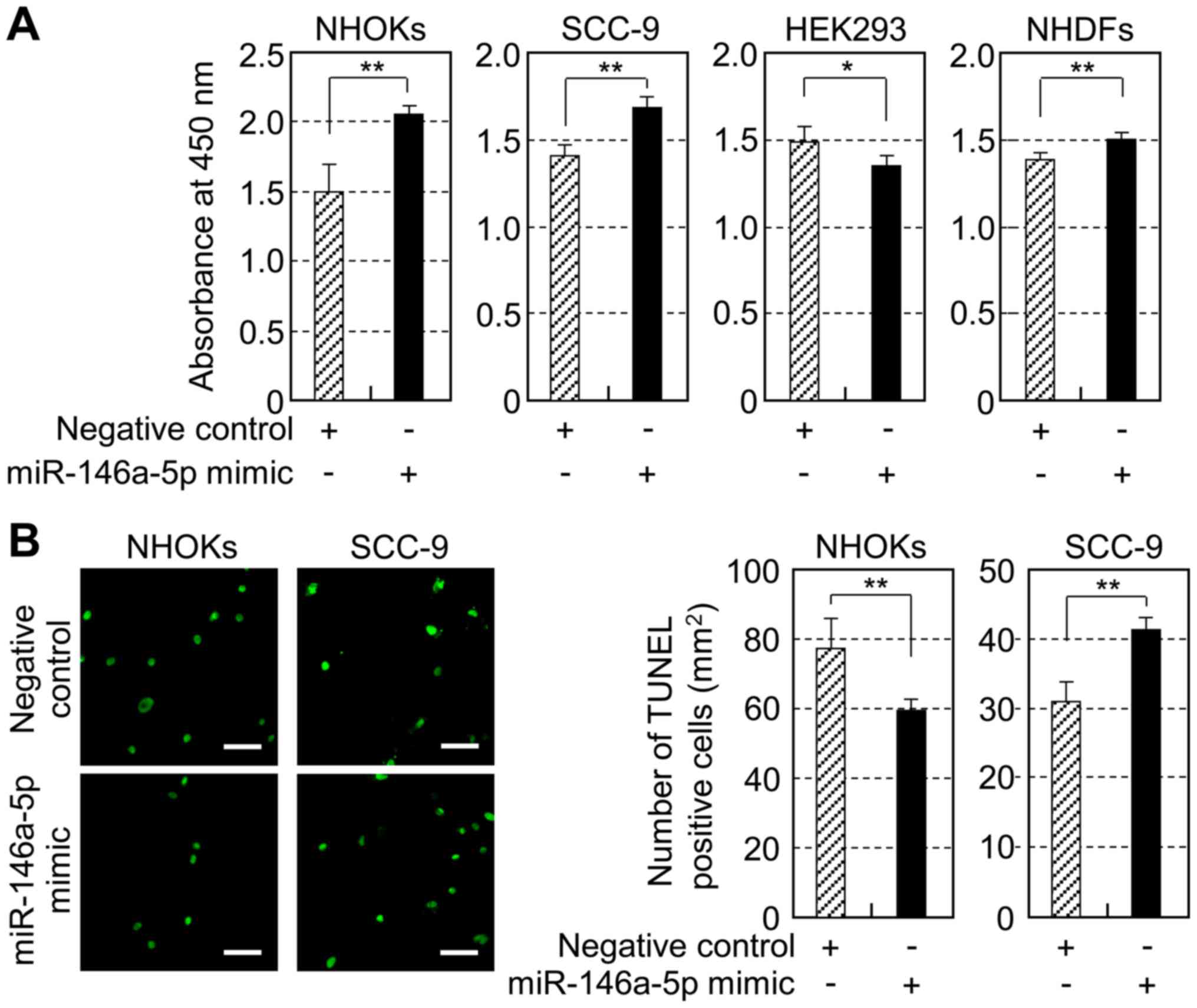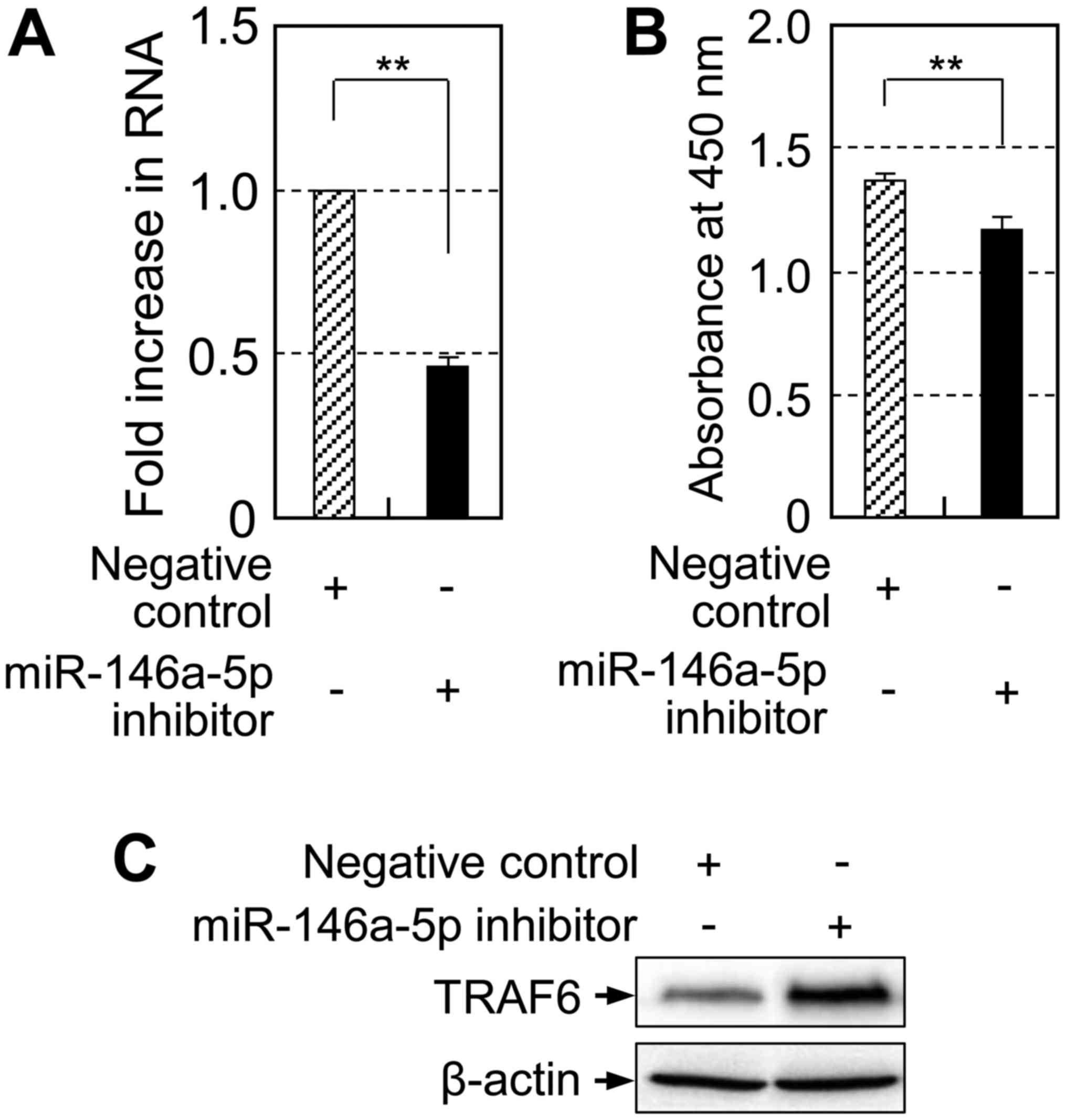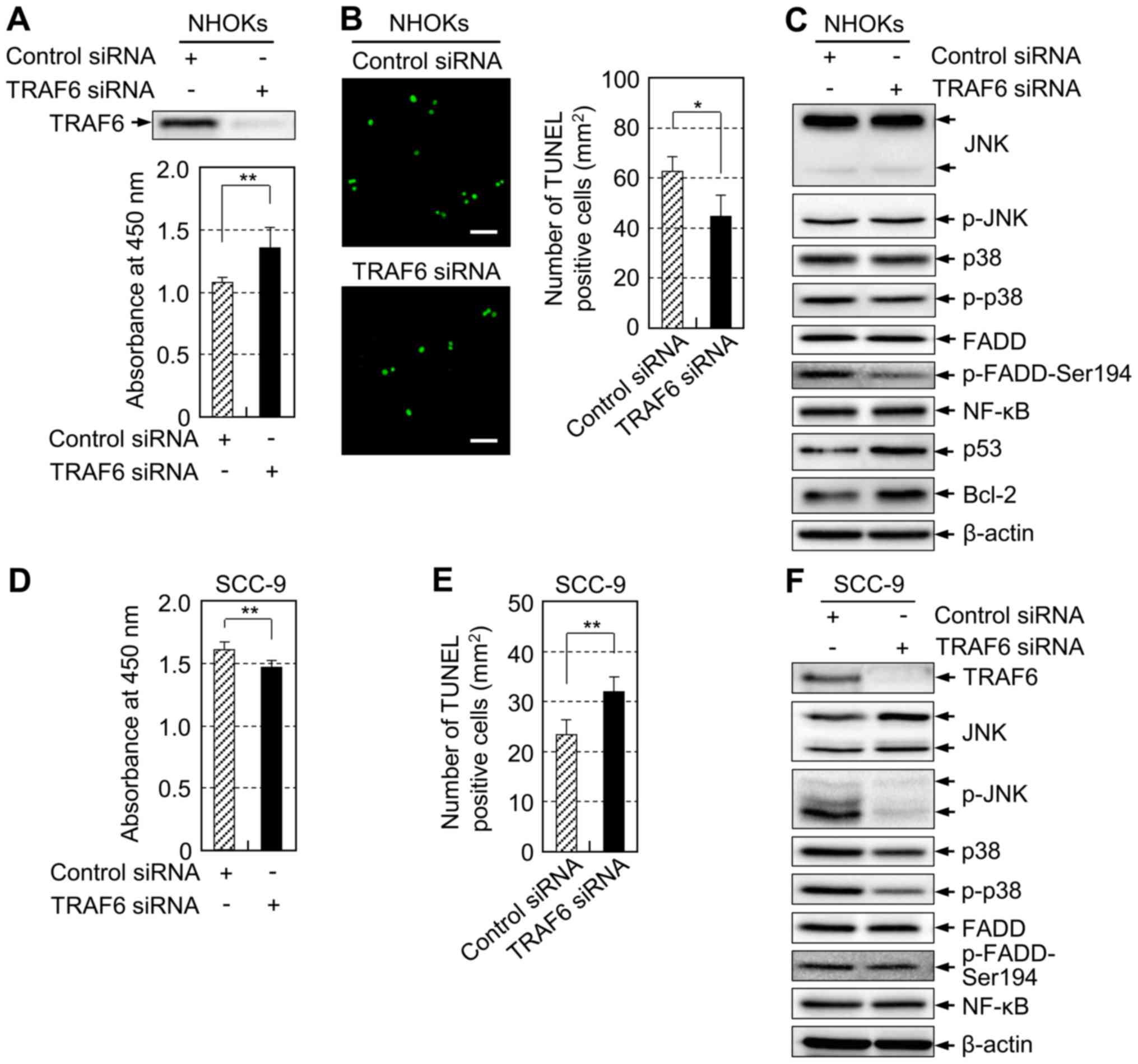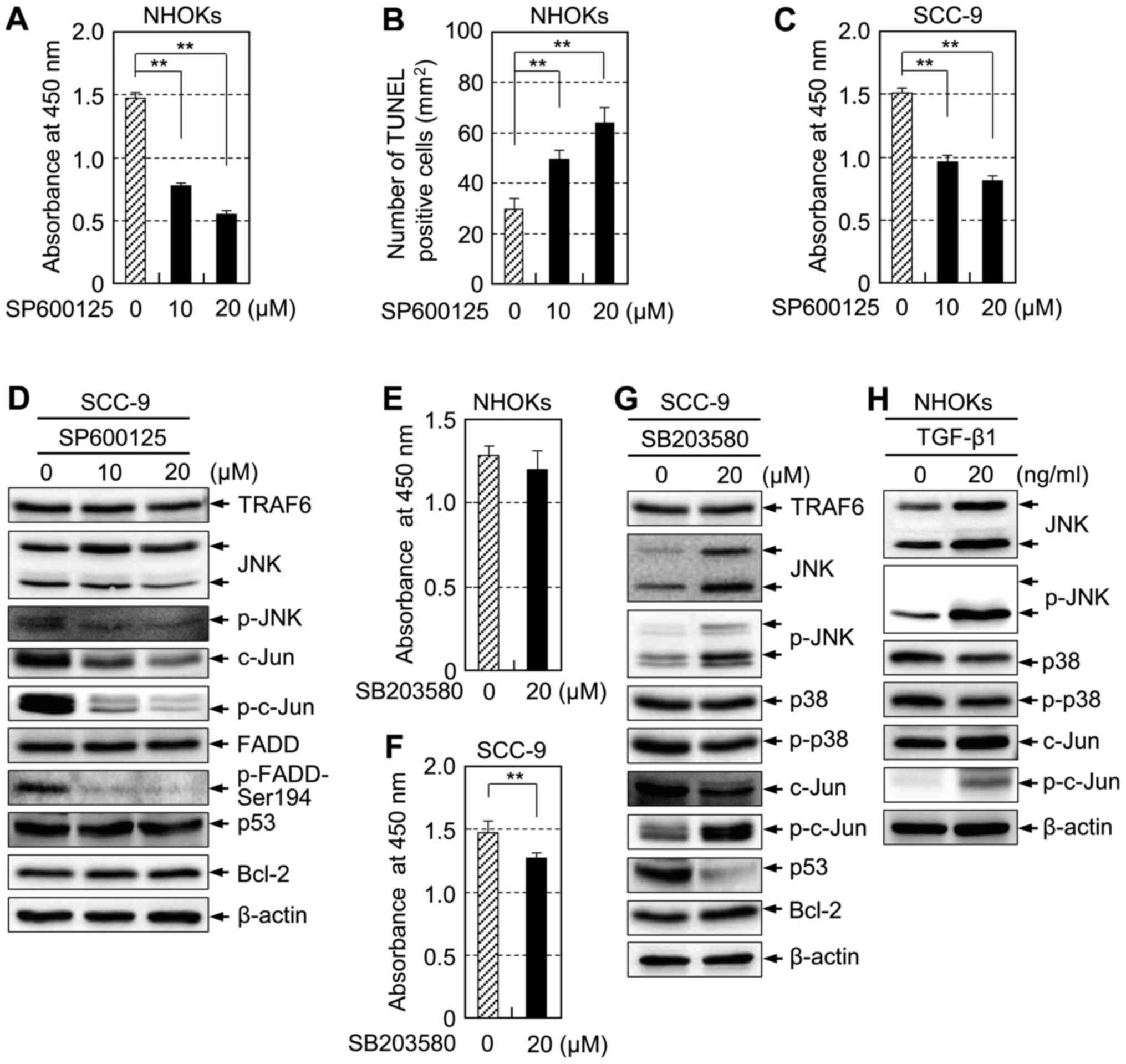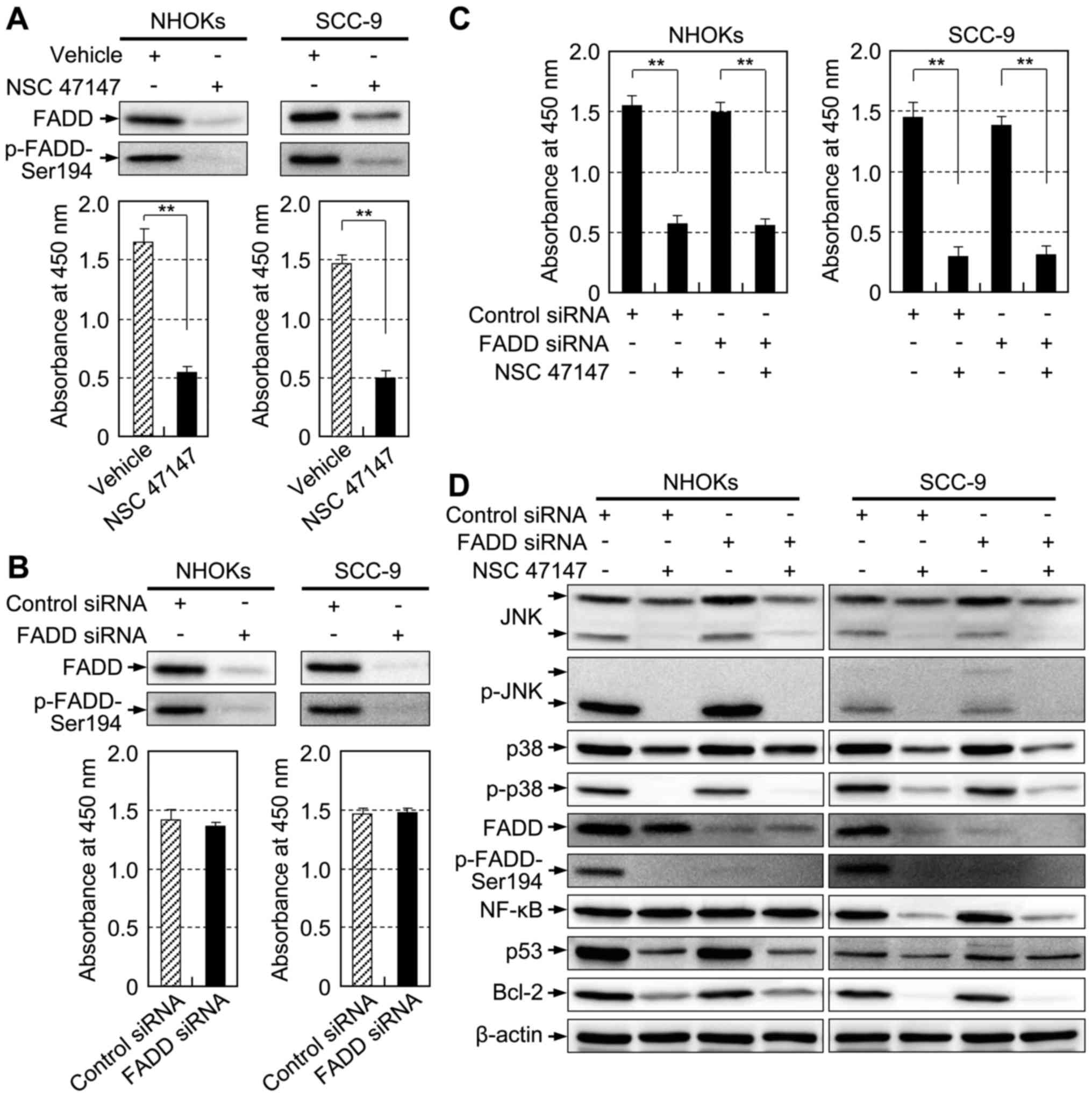|
1
|
Calin GA and Croce CM: MicroRNA signatures
in human cancers. Nat Rev Cancer. 6:857–866. 2006. View Article : Google Scholar : PubMed/NCBI
|
|
2
|
Svoronos AA, Engelman DM and Slack FJ:
OncomiR or tumor suppressor? The duplicity of microRNAs in cancer.
Cancer Res. 76:3666–3670. 2016. View Article : Google Scholar : PubMed/NCBI
|
|
3
|
Elsarraj HS, Stecklein SR, Valdez K and
Behbod F: Emerging functions of microRNA-146a/b in development and
breast cancer: microRNA-146a/b in development and breast cancer. J
Mammary Gland Biol Neoplasia. 17:79–87. 2012. View Article : Google Scholar : PubMed/NCBI
|
|
4
|
Chang SS, Jiang WW, Smith I, Poeta LM,
Begum S, Glazer C, Shan S, Westra W, Sidransky D and Califano JA:
MicroRNA alterations in head and neck squamous cell carcinoma. Int
J Cancer. 123:2791–2797. 2008. View Article : Google Scholar : PubMed/NCBI
|
|
5
|
Wang X, Tang S, Le SY, Lu R, Rader JS,
Meyers C and Zheng ZM: Aberrant expression of oncogenic and
tumor-suppressive microRNAs in cervical cancer is required for
cancer cell growth. PLoS One. 3:e25572008. View Article : Google Scholar : PubMed/NCBI
|
|
6
|
Raponi M, Dossey L, Jatkoe T, Wu X, Chen
G, Fan H and Beer DG: MicroRNA classifiers for predicting prognosis
of squamous cell lung cancer. Cancer Res. 69:5776–5783. 2009.
View Article : Google Scholar : PubMed/NCBI
|
|
7
|
Hung PS, Liu CJ, Chou CS, Kao SY, Yang CC,
Chang KW, Chiu TH and Lin SC: miR-146a enhances the oncogenicity of
oral carcinoma by concomitant targeting of the IRAK1, TRAF6 and
NUMB genes. PLoS One. 8:e799262013. View Article : Google Scholar : PubMed/NCBI
|
|
8
|
Hurst DR, Edmonds MD, Scott GK, Benz CC,
Vaidya KS and Welch DR: Breast cancer metastasis suppressor 1
up-regulates miR-146, which suppresses breast cancer metastasis.
Cancer Res. 69:1279–1283. 2009. View Article : Google Scholar : PubMed/NCBI
|
|
9
|
Kogo R, Mimori K, Tanaka F, Komune S and
Mori M: Clinical significance of miR-146a in gastric cancer cases.
Clin Cancer Res. 17:4277–4284. 2011. View Article : Google Scholar : PubMed/NCBI
|
|
10
|
Lin SL, Chiang A, Chang D and Ying SY:
Loss of mir-146a function in hormone-refractory prostate cancer.
RNA. 14:417–424. 2008. View Article : Google Scholar : PubMed/NCBI
|
|
11
|
Li Y, Vandenboom TG II, Wang Z, Kong D,
Ali S, Philip PA and Sarkar FH: miR-146a suppresses invasion of
pancreatic cancer cells. Cancer Res. 70:1486–1495. 2010. View Article : Google Scholar : PubMed/NCBI
|
|
12
|
Kloosterman WP and Plasterk RHA: The
diverse functions of microRNAs in animal development and disease.
Dev Cell. 11:441–450. 2006. View Article : Google Scholar : PubMed/NCBI
|
|
13
|
Marques-Rocha JL, Samblas M, Milagro FI,
Bressan J, Martínez JA and Marti A: Noncoding RNAs, cytokines, and
inflammation-related diseases. FASEB J. 29:3595–3611. 2015.
View Article : Google Scholar : PubMed/NCBI
|
|
14
|
O'Connell RM, Rao DS and Baltimore D:
microRNA regulation of inflammatory responses. Annu Rev Immunol.
30:295–312. 2012. View Article : Google Scholar : PubMed/NCBI
|
|
15
|
Kundu JK and Surh YJ: Inflammation:
Gearing the journey to cancer. Mutat Res. 659:15–30. 2008.
View Article : Google Scholar : PubMed/NCBI
|
|
16
|
Perry MM, Moschos SA, Williams AE,
Shepherd NJ, Larner-Svensson HM and Lindsay MA: Rapid changes in
microRNA-146a expression negatively regulate the IL-1β-induced
inflammatory response in human lung alveolar epithelial cells. J
Immunol. 180:5689–5698. 2008. View Article : Google Scholar : PubMed/NCBI
|
|
17
|
Liu X, Nelson A, Wang X, Kanaji N, Kim M,
Sato T, Nakanishi M, Li Y, Sun J, Michalski J, et al: MicroRNA-146a
modulates human bronchial epithelial cell survival in response to
the cytokine-induced apoptosis. Biochem Biophys Res Commun.
380:177–182. 2009. View Article : Google Scholar : PubMed/NCBI
|
|
18
|
Xie YF, Shu R, Jiang SY, Liu DL and Zhang
XL: Comparison of microRNA profiles of human periodontal diseased
and healthy gingival tissues. Int J Oral Sci. 3:125–134. 2011.
View Article : Google Scholar : PubMed/NCBI
|
|
19
|
Irwandi RA and Vacharaksa A: The role of
microRNA in periodontal tissue: A review of the literature. Arch
Oral Biol. 72:66–74. 2016. View Article : Google Scholar : PubMed/NCBI
|
|
20
|
Olsen I, Singhrao SK and Osmundsen H:
Periodontitis, pathogenesis and progression: miRNA-mediated
cellular responses to Porphyromonas gingivalis. J Oral Microbiol.
9:13333962017. View Article : Google Scholar :
|
|
21
|
Preedy VR and Hunter RJ: Cytokine.
MicroRNAs and Cytokines. Liu XD: CRC Press; New York: pp. 10–16.
2011
|
|
22
|
Xiao B, Zhu ED, Li N, Lu DS, Li W, Li BS,
Zhao YL, Mao XH, Guo G, Yu PW, et al: Increased miR-146a in gastric
cancer directly targets SMAD4 and is involved in modulating cell
proliferation and apoptosis. Oncol Rep. 27:559–566. 2012.
|
|
23
|
Paik JH, Jang JY, Jeon YK, Kim WY, Kim TM,
Heo DS and Kim CW: MicroRNA-146a downregulates NF-κB activity via
targeting TRAF6 and functions as a tumor suppressor having strong
prognostic implications in NK/T cell lymphoma. Clin Cancer Res.
17:4761–4771. 2011. View Article : Google Scholar : PubMed/NCBI
|
|
24
|
Massagué J, Blain SW and Lo RS: TGFbeta
signaling in growth control, cancer, and heritable disorders. Cell.
103:295–309. 2000. View Article : Google Scholar : PubMed/NCBI
|
|
25
|
Zhang YE: Non-Smad pathways in TGF-β
signaling. Cell Res. 19:128–139. 2009. View Article : Google Scholar :
|
|
26
|
Sorrentino A, Thakur N, Grimsby S,
Marcusson A, von Bulow V, Schuster N, Zhang S, Heldin CH and
Landström M: The type I TGF-β receptor engages TRAF6 to activate
TAK1 in a receptor kinase-independent manner. Nat Cell Biol.
10:1199–1207. 2008. View Article : Google Scholar : PubMed/NCBI
|
|
27
|
Yamashita M, Fatyol K, Jin C, Wang X, Liu
Z and Zhang YE: TRAF6 mediates Smad-independent activation of JNK
and p38 by TGF-β. Mol Cell. 31:918–924. 2008. View Article : Google Scholar : PubMed/NCBI
|
|
28
|
Wagner EF and Nebreda AR: Signal
integration by JNK and p38 MAPK pathways in cancer development. Nat
Rev Cancer. 9:537–549. 2009. View Article : Google Scholar : PubMed/NCBI
|
|
29
|
Vaiopoulos AG, Papachroni KK and
Papavassiliou AG: Colon carcinogenesis: Learning from NF-κB and
AP-1. Int J Biochem Cell Biol. 42:1061–1065. 2010. View Article : Google Scholar : PubMed/NCBI
|
|
30
|
He L, Wu X, Siegel R and Lipsky PE: TRAF6
regulates cell fate decisions by inducing caspase 8-dependent
apoptosis and the activation of NF-κB. J Biol Chem.
281:11235–11249. 2006. View Article : Google Scholar : PubMed/NCBI
|
|
31
|
Peter ME and Krammer PH: Mechanisms of
CD95 (APO-1/Fas)-mediated apoptosis. Curr Opin Immunol. 10:545–551.
1998. View Article : Google Scholar : PubMed/NCBI
|
|
32
|
Curtale G, Citarella F, Carissimi C,
Goldoni M, Carucci N, Fulci V, Franceschini D, Meloni F, Barnaba V
and Macino G: An emerging player in the adaptive immune response:
microRNA-146a is a modulator of IL-2 expression and
activation-induced cell death in T lymphocytes. Blood. 115:265–273.
2010. View Article : Google Scholar
|
|
33
|
Chen G, Bhojani MS, Heaford AC, Chang DC,
Laxman B, Thomas DG, Griffin LB, Yu J, Coppola JM, Giordano TJ, et
al: Phosphorylated FADD induces NF-κB, perturbs cell cycle, and is
associated with poor outcome in lung adenocarcinomas. Proc Natl
Acad Sci USA. 102:12507–12512. 2005. View Article : Google Scholar
|
|
34
|
Hua ZC, Sohn SJ, Kang C, Cado D and Winoto
A: A function of Fas-associated death domain protein in cell cycle
progression localized to a single amino acid at its C-terminal
region. Immunity. 18:513–521. 2003. View Article : Google Scholar : PubMed/NCBI
|
|
35
|
Oh JE, Kook JK and Min BM: βig-h3 induces
keratinocyte differentiation via modulation of involucrin and
transglutaminase expression through the integrin α3β1 and the
phosphatidylinositol 3-kinase/Akt signaling pathway. J Biol Chem.
280:21629–21637. 2005. View Article : Google Scholar : PubMed/NCBI
|
|
36
|
Yeo IS, Oh JE, Jeong L, Lee TS, Lee SJ,
Park WH and Min BM: Collagen-based biomimetic nanofibrous
scaffolds: Preparation and characterization of collagen/silk
fibroin bicomponent nanofibrous structures. Biomacromolecules.
9:1106–1116. 2008. View Article : Google Scholar : PubMed/NCBI
|
|
37
|
Park NH, Min BM, Li SL, Huang MZ, Cherick
HM and Doniger J: Immortalization of normal human oral
keratinocytes with type 16 human papillomavirus. Carcinogenesis.
12:1627–1631. 1991. View Article : Google Scholar : PubMed/NCBI
|
|
38
|
Min B, Woo K, Baek J, Lee G and Park N:
Malignant transformation of hpv-immortalized human oral
keratinocytes by chemical carcinogens. Int J Oncol. 7:249–256.
1995.PubMed/NCBI
|
|
39
|
Jang DH, Oh JE, Kang HK, Kim OB, Min SK,
Jung SY, Hong SD, Lee JI and Min BM: Spontaneous tumorigenicity of
primary human oral keratinocytes with human papillomavirus
negativity and impaired apoptosis. Int J Oncol. 36:1491–1501.
2010.PubMed/NCBI
|
|
40
|
Lee G, Kim YB, Kim JH, Kim MS, Shin KH,
Won YS, Lee JI, Choung PH, Hyun BH and Min BM: Characterization of
novel cell lines established from three human oral squamous cell
carcinomas. Int J Oncol. 20:1151–1159. 2002.PubMed/NCBI
|
|
41
|
R Development Core Team: 2011, A Language
and Environment for Statistical Computing. Vienna, Austria: the R
Foundation for Statistical Computing; ISBN: 3-900051-07-0Available
online at http://www.R-project.org/.
|
|
42
|
Sing T, Sander O, Beerenwinkel N and
Lengauer T: ROCR: Visualizing classifier performance in R.
Bioinformatics. 21:3940–3941. 2005. View Article : Google Scholar : PubMed/NCBI
|
|
43
|
Geraldo MV, Yamashita AS and Kimura ET:
MicroRNA miR-146b-5p regulates signal transduction of TGF-β by
repressing SMAD4 in thyroid cancer. Oncogene. 31:1910–1922. 2012.
View Article : Google Scholar
|
|
44
|
Greco D, Kivi N, Qian K, Leivonen SK,
Auvinen P and Auvinen E: Human papillomavirus 16 E5 modulates the
expression of host microRNAs. PLoS One. 6:e216462011. View Article : Google Scholar : PubMed/NCBI
|
|
45
|
Schinske KA, Nyati S, Khan AP, Williams
TM, Johnson TD, Ross BD, Tomás RP and Rehemtulla A: A novel kinase
inhibitor of FADD phosphorylation chemosensitizes through the
inhibition of NF-κB. Mol Cancer Ther. 10:1807–1817. 2011.
View Article : Google Scholar : PubMed/NCBI
|
|
46
|
Cervigne NK, Reis PP, Machado J, Sadikovic
B, Bradley G, Galloni NN, Pintilie M, Jurisica I, Perez-Ordonez B,
Gilbert R, et al: Identification of a microRNA signature associated
with progression of leukoplakia to oral carcinoma. Hum Mol Genet.
18:4818–4829. 2009. View Article : Google Scholar : PubMed/NCBI
|
|
47
|
Mitchell PS, Parkin RK, Kroh EM, Fritz BR,
Wyman SK, Pogosova-Agadjanyan EL, Peterson A, Noteboom J, O'Briant
KC, Allen A, et al: Circulating microRNAs as stable blood-based
markers for cancer detection. Proc Natl Acad Sci USA.
105:10513–10518. 2008. View Article : Google Scholar : PubMed/NCBI
|
|
48
|
Park NJ, Zhou H, Elashoff D, Henson BS,
Kastratovic DA, Abemayor E and Wong DT: Salivary microRNA:
Discovery, characterization, and clinical utility for oral cancer
detection. Clin Cancer Res. 15:5473–5477. 2009. View Article : Google Scholar : PubMed/NCBI
|
|
49
|
Arão TC, Guimarães ALS, de Paula AMB,
Gomes CC and Gomez RS: Increased miRNA-146a and miRNA-155
expressions in oral lichen planus. Arch Dermatol Res. 304:371–375.
2012. View Article : Google Scholar
|
|
50
|
Min SK, Jung SY, Kang HK, Jo SB, Kim MJ
and Min BM: MicroRNA-146a-5p limits elevated TGF-β signal during
cell senescence. Mol Ther Nucleic Acids. 7:335–338. 2017.
View Article : Google Scholar : PubMed/NCBI
|
|
51
|
Massagué J: TGFbeta in cancer. Cell.
134:215–230. 2008. View Article : Google Scholar : PubMed/NCBI
|



